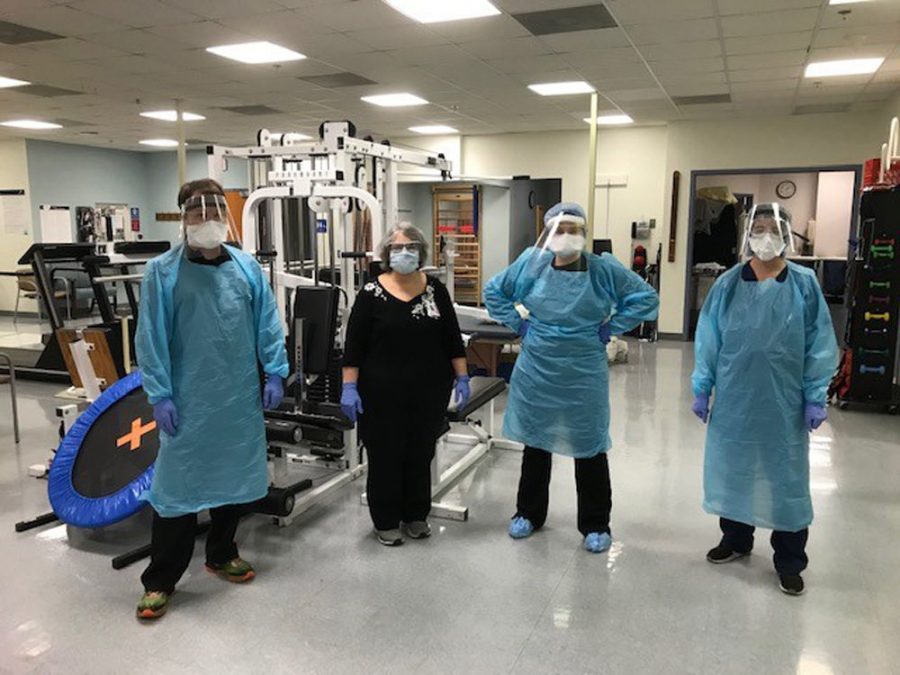Physical, speech therapists help patients recover from disease’s debilitating effects
Published May 22, 2020
Ask Julie Rosenfeld what has made the biggest impression on her in caring for COVID-19 patients, and she’ll tell you in one word: debility.
“From a therapy standpoint, it’s amazing how debilitated these poor people are even if they are off the ventilator or even if they haven’t gone on a vent,” said Rosenfeld, 59, director of physical medicine and rehabilitation at SSM Health St. Louis University Hospital. She oversees the physical, occupational and speech therapists at the hospital, many of whom are working with patients infected with the coronavirus.
“In occupational therapy, they are working on bathing and dressing. Just putting on a shirt gives the patient shortness of breath,” said Rosenfeld, who belongs to Congregation Shaare Emeth. “In physical therapy, even if we walk them to the door, their endurance is just so poor.
ADVERTISEMENT
“Our focus went from OK, let’s try to not see them because we don’t want to have exposure, to we have to see these people because they are so sick.”
Rosenfeld, who has been at SLU hospital for 33 years, said while she never got any pushback from her therapists about treating COVID patients, some were understandably afraid because the virus that causes COVID-19 is so contagious. SLU hospital, like many in the area, has floor units dedicated to COVID patients.
“We always had the PPE (personal protective equipment),” but then we learned more about how the virus is transmitted, she said. “We started dedicating therapists to treat those patients on the COVID units. We have two teams and, on each team, we have a PT (physical therapist) and OT (occupational therapist). They basically stay with COVID patients and are trying not to go into the rooms of other patients. We’re trying to decrease exposure to our therapists as well as other patients.
ADVERTISEMENT
“Our speech therapists, since they deal with swallowing and respiratory and trachea, they have been the ones seeing the most COVID because some of those patients are on vents and things like that that that (our speech therapists) work with.”
Still, one of the therapists did test positive for the virus despite wearing PPE.
“He was like, I could have gotten this at the grocery store or the gas station or running,” Rosenfeld said. “He is a runner and in great shape. He is totally fine now. He never had any breathing problems, but he was so tired and debilitated.”
Rosenfeld co-chairs the hospital’s emergency labor pool, which the health system developed amid COVID to help departments that are overtaxed by supplying staff from areas where the patient census is low and staff is less busy. In addition, patients entering the hospital are thoroughly questioned about their symptoms, and all employees have their temperature taken daily, so every point of entry to the hospital needs a screener.
“People from the labor pool step in where needed, like answering phones on the COVID units or if nurses are in a patient’s room wearing their PPE and forgot something,” Rosenfeld said. “Rather than have to waste the PPE, they (the labor pool) are willing to go get what the nurse needs.
“I am so impressed with the way everyone stepped up and worked together, collaborating to support their co-workers.”
















